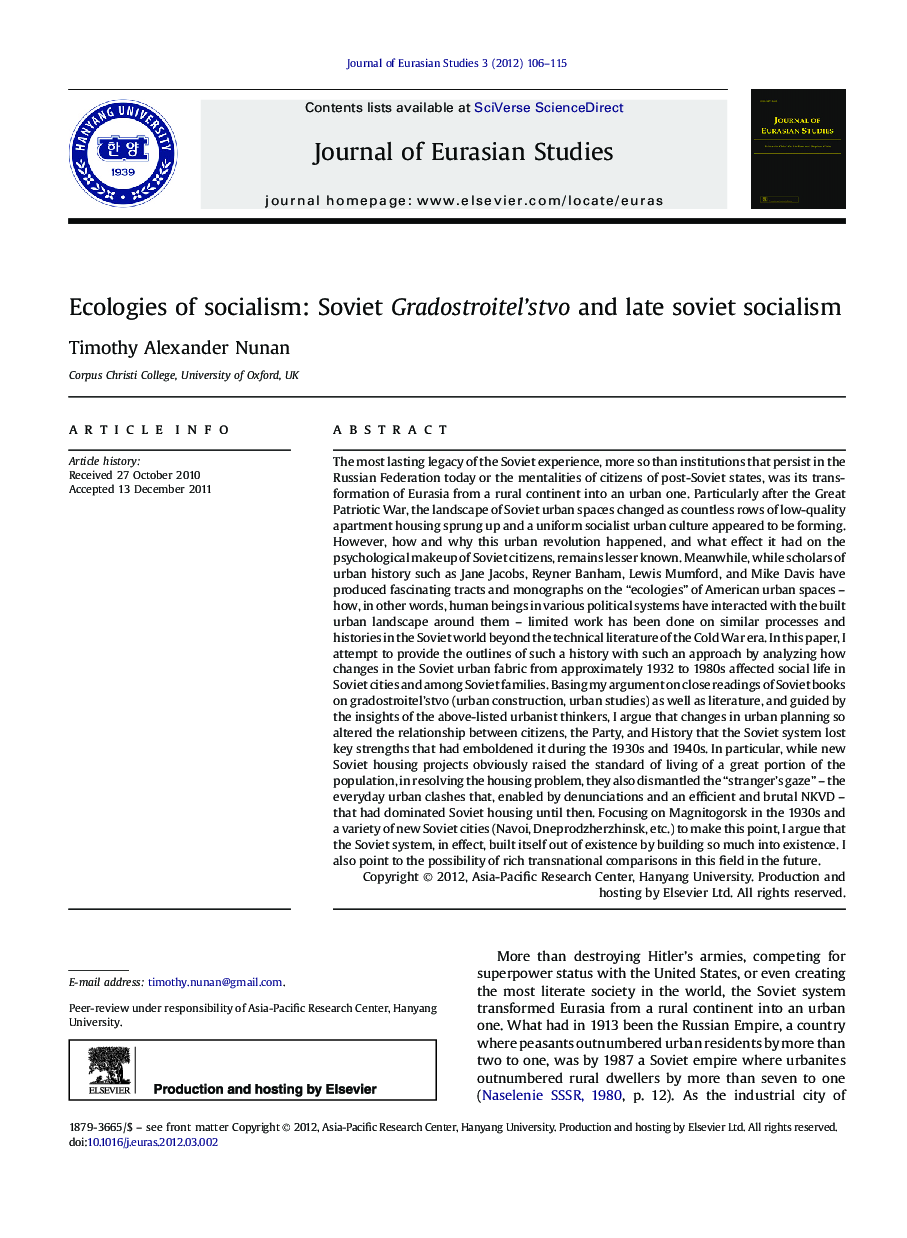| Article ID | Journal | Published Year | Pages | File Type |
|---|---|---|---|---|
| 1127243 | Journal of Eurasian Studies | 2012 | 10 Pages |
The most lasting legacy of the Soviet experience, more so than institutions that persist in the Russian Federation today or the mentalities of citizens of post-Soviet states, was its transformation of Eurasia from a rural continent into an urban one. Particularly after the Great Patriotic War, the landscape of Soviet urban spaces changed as countless rows of low-quality apartment housing sprung up and a uniform socialist urban culture appeared to be forming. However, how and why this urban revolution happened, and what effect it had on the psychological makeup of Soviet citizens, remains lesser known. Meanwhile, while scholars of urban history such as Jane Jacobs, Reyner Banham, Lewis Mumford, and Mike Davis have produced fascinating tracts and monographs on the “ecologies” of American urban spaces – how, in other words, human beings in various political systems have interacted with the built urban landscape around them – limited work has been done on similar processes and histories in the Soviet world beyond the technical literature of the Cold War era. In this paper, I attempt to provide the outlines of such a history with such an approach by analyzing how changes in the Soviet urban fabric from approximately 1932 to 1980s affected social life in Soviet cities and among Soviet families. Basing my argument on close readings of Soviet books on gradostroitel'stvo (urban construction, urban studies) as well as literature, and guided by the insights of the above-listed urbanist thinkers, I argue that changes in urban planning so altered the relationship between citizens, the Party, and History that the Soviet system lost key strengths that had emboldened it during the 1930s and 1940s. In particular, while new Soviet housing projects obviously raised the standard of living of a great portion of the population, in resolving the housing problem, they also dismantled the “stranger's gaze” – the everyday urban clashes that, enabled by denunciations and an efficient and brutal NKVD – that had dominated Soviet housing until then. Focusing on Magnitogorsk in the 1930s and a variety of new Soviet cities (Navoi, Dneprodzherzhinsk, etc.) to make this point, I argue that the Soviet system, in effect, built itself out of existence by building so much into existence. I also point to the possibility of rich transnational comparisons in this field in the future.
